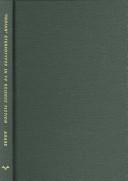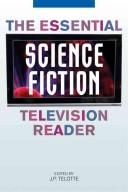| Listing 1 - 10 of 19 | << page >> |
Sort by
|

ISBN: 0292796854 0292706111 029270612X Year: 2005 Publisher: Austin : University of Texas Press,
Abstract | Keywords | Export | Availability | Bookmark
 Loading...
Loading...Choose an application
- Reference Manager
- EndNote
- RefWorks (Direct export to RefWorks)
According to an early 1990s study, 95 percent of what college students know about Native Americans was acquired through the media, leading to widespread misunderstandings of First Nations peoples. Sierra Adare contends that negative "Indian" stereotypes do physical, mental, emotional, and financial harm to First Nations individuals. At its core, this book is a social study whose purpose is to explore the responses of First Nations peoples to representative "Indian" stereotypes portrayed within the TV science fiction genre. Participants in Adare's study viewed episodes from My Favorite Martian, Star Trek, Star Trek: Voyager, Quantum Leap, The Adventures of Superman, and Star Trek: The Next Generation. Reactions by viewers range from optimism to a deep-rooted sadness. The strongest responses came after viewing a Superman episode's depiction of an "evil medicine man" who uses a ceremonial pipe to kill a warrior. The significance of First Nations peoples' responses and reactions are both surprising and profound. After publication of "Indian" Stereotypes in TV Science Fiction, ignorance can no longer be used as an excuse for Hollywood's irresponsible depiction of First Nations peoples' culture, traditions, elders, religious beliefs, and sacred objects.
Indians on television. --- Science fiction television programs --- Sci-fi television programs --- Television programs --- Television
Book
ISBN: 1442229861 9781442229860 1306259452 9781306259453 9781442229853 1442229853 Year: 2014 Publisher: Lanham
Abstract | Keywords | Export | Availability | Bookmark
 Loading...
Loading...Choose an application
- Reference Manager
- EndNote
- RefWorks (Direct export to RefWorks)
Drawing upon her background inOrganizational Leadership, the author looks at the various representations of leadership in science fiction programs of the last 50 years. She examines how the various leaders in these programs reflect societal trends in business, religion, spirituality, politics, and the military.

ISBN: 0813138736 1283233274 9786613233271 0813172969 9780813172965 9780813124926 0813124921 Year: 2008 Publisher: Lexington University Press of Kentucky
Abstract | Keywords | Export | Availability | Bookmark
 Loading...
Loading...Choose an application
- Reference Manager
- EndNote
- RefWorks (Direct export to RefWorks)
Exploring early hits such as The Twilight Zone and Star Trek, as well as more recent successes such as Battlestar Galactica and Lost, The Essential Science Fiction Television Reader illuminates the history, narrative approaches, and themes of the genre. The book discusses science fiction television from its early years when shows attempted to recreate the allure of science fiction cinema, to its current status as a sophisticated genre with a popularity all its own. J. P. Telotte has assembled a wideranging volume rich in theoretical scholarship yet fully accessible to science fiction fans.
Book
ISBN: 1299201202 070832360X 9780708323601 0708323596 9780708323595 9781783161126 1783161124 9780708323595 9781299201200 Year: 2012 Publisher: Cardiff University of Wales Press
Abstract | Keywords | Export | Availability | Bookmark
 Loading...
Loading...Choose an application
- Reference Manager
- EndNote
- RefWorks (Direct export to RefWorks)
This is the first full-length academic study of Life on Mars (and its successor, Ashes to Ashes), and seeks to account for the series' innovative form and popular appeal. Paying attention to issues of genre and hybridity, the book examines televisual and cultural memory, press and reception contexts and analyses the ways in which both series represent Britain in the 1970's and 1980's. The book also discusses the remakes of Life on Mars in the USA and Spain, acknowledging both the specific address to particular situations and the ways in which key elements are re-worked in different national cont
Book
ISBN: 1282650777 9786612650772 1443821039 9781443821032 9781443820844 1443820849 9781282650770 Year: 2010 Publisher: Newcastle Upon Tyne Cambridge Scholars Pub.
Abstract | Keywords | Export | Availability | Bookmark
 Loading...
Loading...Choose an application
- Reference Manager
- EndNote
- RefWorks (Direct export to RefWorks)
Peregrinations, Ruminations, and Regenerations: A Critical Approach to Doctor Who examines the famous BBC science fiction show as a cultural artifact in dialogue with other science fiction, with politics and religion, and with the culture at large, both in terms of how it reflects and comments upon that culture and in terms of the audience and the peculiarities of its response. This book enables researchers in film and media to make historical, industrial, aesthetic, and ideological connec...
Book
ISBN: 1786721023 1350985481 9781786721020 9781786731029 1786731029 9781784536480 1784536482 Year: 2017 Publisher: London, England : London, England : I.B. Tauris & Co. Ltd, Bloomsbury Publishing,
Abstract | Keywords | Export | Availability | Bookmark
 Loading...
Loading...Choose an application
- Reference Manager
- EndNote
- RefWorks (Direct export to RefWorks)
"The cyborg - an organic body augmented with technology - is an enduring figure that can be found across science fiction stories, novels, films, and, more recently, television. What can its marked presence in cult TV shows tell us about the rapidly changing world we live in, and indeed about the human condition? This book explored how the image of the cyborg attracts our fears and fascinations. These bionic creations encourage us, as viewers, to think about our interactions with technology in an age of immediacy and surveillance, reassess our own corporeal experiences, and re-imagine gender binaries and racial differences. Chapters draw together cyborg theory and criticism from science fiction and television studies to analyse a variety a popular series. From Doctor Who to Stor Trek: Voyager, and Battlestar Galactica to Terminator: The Sarah Connor Chronicles, the cyborg appears as action hero, villain, or as a reflection of ourselves. Whether manifested in the Daleks, the Cylons, or the Borg, these figures are ideal sites to explore concepts such as replication, uniformly, performance, embodiment and virtuality, and the serial narratives of cult TV offer the ideal format to analyse changing cyborg representations over time. This book uses the televisual medium as a tool to understand a range of cybernetic characters, forming a notable event in a growing field that will delight scholars and fans of futuristic television alike."--
Book
ISBN: 9780415641074 9780415641081 9780203076330 9781135124793 9781135124830 9781135124847 Year: 2013 Publisher: New York, N.Y. Routledge
Abstract | Keywords | Export | Availability | Bookmark
 Loading...
Loading...Choose an application
- Reference Manager
- EndNote
- RefWorks (Direct export to RefWorks)
Mass communications --- Music --- Science fiction television programs --- Television music --- 82:78 --- Background music for television --- Music for television --- Music videos --- Sci-fi television programs --- Television programs --- Analysis, appreciation --- History and criticism --- Literatuur en muziek
Periodical
Abstract | Keywords | Export | Availability | Bookmark
 Loading...
Loading...Choose an application
- Reference Manager
- EndNote
- RefWorks (Direct export to RefWorks)
Science fiction films --- Science fiction television programs --- Science fiction films. --- Science fiction television programs. --- History and criticism --- Arts and Humanities --- Literature --- Sci-fi television programs --- Extrapolative films --- Future films (Science fiction films) --- Sci-fi films --- Sci-fiers (Motion pictures) --- Television programs --- Motion pictures --- Film
Book
ISBN: 1442232854 9781442232853 9781442232846 1442232846 Year: 2014 Publisher: Lanham, Maryland
Abstract | Keywords | Export | Availability | Bookmark
 Loading...
Loading...Choose an application
- Reference Manager
- EndNote
- RefWorks (Direct export to RefWorks)
Doctor Who is one of the most enduring British programs over the last 50 years and its success has translated to the U.S., where it has been shown for decades, first on PBS stations and currently on BBC America. This book looks at how the writers and producers of Doctor Who have adapted-and will no doubt continue to do so-various texts to create many episodes throughout the show's history.
History on television. --- Television and history. --- Science fiction television programs --- Sci-fi television programs --- Television programs --- History and television --- History --- Television --- History and criticism. --- Doctor Who (Television program : 1963-1989) --- Doctor Who (Television program : 2005- ) --- Dr. Who (Television program : 2005- ) --- Dr. Who (Television program)
Book
ISBN: 1978801645 1978801610 Year: 2020 Publisher: New Brunswick, NJ : Rutgers University Press,
Abstract | Keywords | Export | Availability | Bookmark
 Loading...
Loading...Choose an application
- Reference Manager
- EndNote
- RefWorks (Direct export to RefWorks)
Planet Auschwitz explores the diverse ways in which the Holocaust influences and shapes science fiction and horror film and television by focusing on notable contributions from the last fifty years. The supernatural and extraterrestrial are rich and complex spaces with which to examine important Holocaust themes - trauma, guilt, grief, ideological fervor and perversion, industrialized killing, and the dangerous afterlife of Nazism after World War II. Planet Auschwitz explores why the Holocaust continues to set the standard for horror in the modern era and asks if the Holocaust is imaginable here on Earth, at least by those who perpetrated it, why not in a galaxy far, far away? The pervasive use of Holocaust imagery and plotlines in horror and science fiction reflects both our preoccupation with its enduring trauma and our persistent need to “work through” its many legacies. Planet Auschwitz website (https://planetauschwitz.com)
Holocaust, Jewish (1939-1945), in motion pictures. --- Holocaust, Jewish (1939-1945), on television. --- Horror films --- Horror television programs --- Science fiction films --- Science fiction television programs --- HISTORY / General. --- Sci-fi television programs --- Television programs --- Haunted house television programs --- Monster television programs --- Television --- Motion pictures --- History and criticism.
| Listing 1 - 10 of 19 | << page >> |
Sort by
|

 Search
Search Feedback
Feedback About UniCat
About UniCat  Help
Help News
News